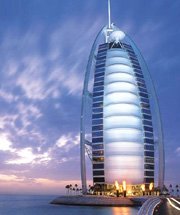
- Home
- Travel Packages
- Top Destination
-
Travel Attraction
By Category
Top Attraction

- Travel Agents
- Car Rentals
- Hotels
Honduras is officially known as the Republic of Honduras and is situated on the southern parts of the North American continent. Among the many indigenous tribes and cultures Honduras was home to, the Mayans were the most prominent. The beaches of Honduras provide excellent opportunities of snorkeling and other water sports. Activities like bird watching, and scenic beauties like waterfalls and national parks provide the perfect holiday destination for the backpackers and adventure seeker.
Lempira (HNL)
112,492 square km (43,278 square miles)
8,249,574
Spanish, English, Garifuna, Miskito, etc.
+504
CST (UTC?6)
The climate of Honduras varies according to the region. The Caribbean lowlands are the wettest with the maximum amount of rainfall while the Pacific Lowlands are drier. The interior highlands are dry and witnesses decrease in the temperatures with gain in the elevation of the land.
Most of Honduras is covered with mountainous regions. However, the coastal areas also have plains. Forests are also found abundantly in the country. The Rio Platano Biosphere Reserve is a UNESCO World heritage site.
Territory & Capital : Most of the area of Honduras is situated between the latitudes 13 degrees and 17 degrees N and longitudes 83 degrees and 90 degrees W. The northern coast of Honduras is surrounded by the Caribbean Sea and the southern areas by the Pacific Ocean. In earlier times, Honduras was referred to as Spanish Honduras so as to avoid confusion with the British Honduras.
Suitable Visiting Seasons : The months of May and June are the best times to visit Honduras. The weather is pleasant and the rush of the tourists is yet to start.
Airways, waterways, roadways, and railways provide transportation to the travelers in Honduras.
Contact the nearest Honduran Embassy for the details on the visa requirements.